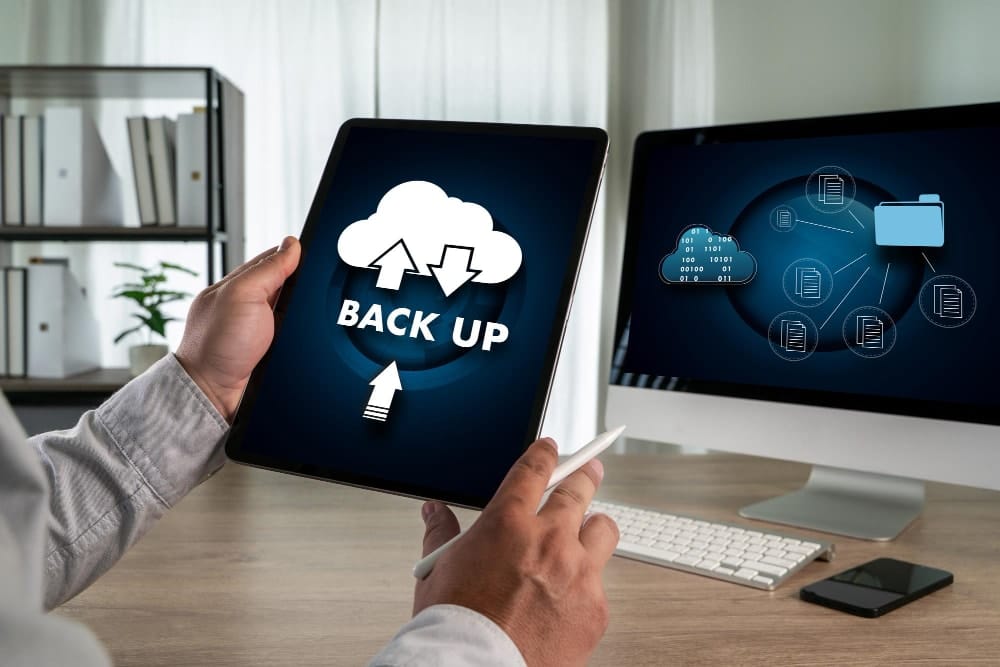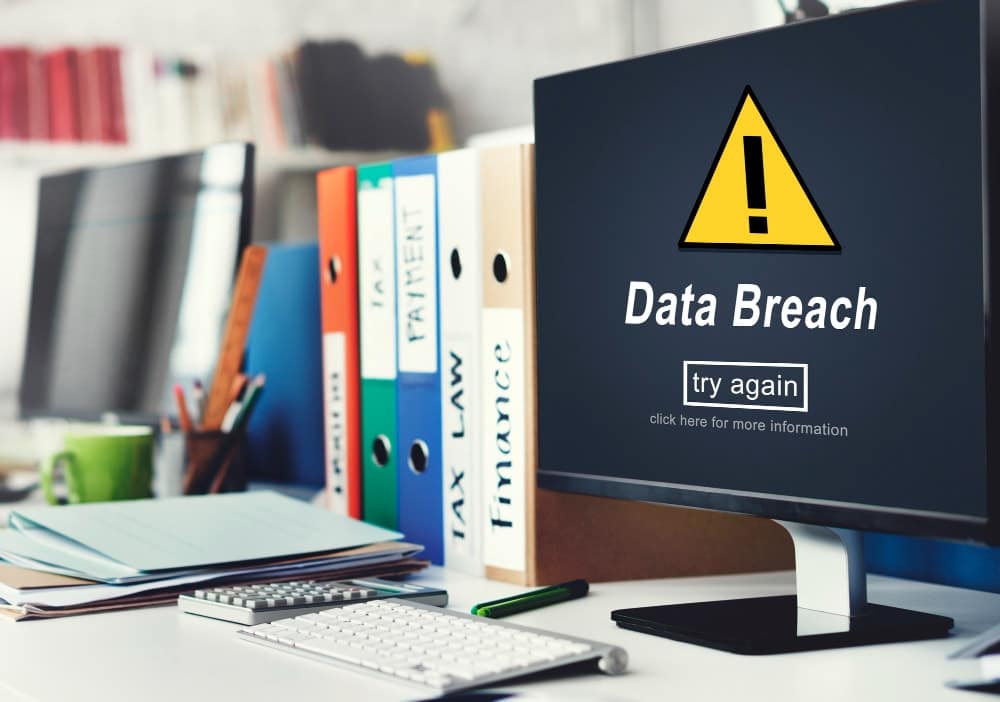Disasters don’t just knock out power lines; they can knock out your data.
You run a business in South Florida and know better than most that having a plan for hurricanes, flooding, and power outages is one of the smartest things you can do. You’ve probably got a generator checklist, a list of locations you can go depending on what’s coming, and even a tree-trimming schedule for covering yourself for physical damage; that’s a decent place to start.
But here’s the blind spot most are missing: when a storm makes headlines, cybercriminals move stealthily in the background to take advantage of the vulnerable situation. That could include phishing a distracted staff, targeting remote logins, and testing the stability of backups while your team is busy with physical prep. That’s why every emergency strategy needs a cybersecurity disaster recovery plan baked in. Physical readiness without cyber readiness is like boarding up your windows and leaving the front door wide open.
Now that the stage is set, follow along and take some of the tips with you to secure your business moving forward.

Why Cybersecurity Belongs in Your Business Continuity and Emergency Plans
1) Disasters create perfect conditions for cyberattacks
Criminals know your guard is down during and after an event. They send fake “utility” emails, spoof insurance portals, and target remote workers. A cybersecurity disaster recovery plan gives you playbooks for detection, containment, and recovery so a phishing email doesn’t escalate into days of downtime.
2) Downtime is downtime, no matter the cause
Whether it’s water damage or ransomware, if your team can’t access systems, the result is lost revenue, missed appointments, SLA penalties, and compliance exposure. A unified plan ensures your RTO/RPO (how fast you recover and how much data you can afford to lose) accounts for both physical and cyber disruptions.
3) Compliance and reputation depend on it
For medical, legal, and financial practices in Miami–Dade and Broward, regulators expect documented plans, continuously tested backups, and incident response procedures. Integrating cybersecurity into emergency prep proves due diligence to auditors and to clients who trust you with sensitive information. In a different light, your attention to the cybersecurity of your customers is a selling point for the trustworthiness of your organization.

The Thursday before Landfall
Picture this: It’s Thursday. A hurricane watch is issued for Broward County. Your practice manager is on the phone rescheduling appointments. Meanwhile, a staff member receives an email from a “cloud backup” vendor asking to re-authenticate for a “storm-related service update.” They click the link, log in, and unknowingly hand over credentials. By Monday, your backups are encrypted and fully out of your control, and your server won’t boot. You did the physical prep. The door you missed was digital.

Building Your Cybersecurity Disaster Recovery Plan to Shield Your IT Infrastructure and Offer Data Protection
- Inventory what matters. List your critical apps (EHR, practice management, accounting), where they live (on-prem, cloud), and who must have access after an event. This drives your RTO/RPO.
- Harden endpoints and the network. Use next-gen endpoint protection (EDR), strong firewalls, and 24/7 monitoring so threats are stopped early, especially when your office is closed. JCM Telecom delivers managed endpoint protection, advanced firewalling, and SOC coverage locally in Fort Lauderdale.
- Back up SaaS data, too. Microsoft 365 and Google Workspace don’t equal full data backup. Plan for automated, point-in-time restores for email, SharePoint/OneDrive, Teams, Google Drive, and Contacts. JCM includes Datto SaaS Protection and rapid restoration options in our packages.
- Choose a partner who does it all under one roof. When a crisis hits, you need one number to call. Our managed IT services combine cloud backup, cybersecurity, helpdesk, VoIP, and internet to speed recovery and reduce finger-pointing. The last thing you need when trying to get back up and running is getting the runaround from multiple vendors.
Want a guided path? Start with a cybersecurity disaster recovery plan review for your environment.
Backup Critical Data so You can Truly Recover
- Follow 3-2-1-1: Three copies of data, on two different media, one offsite, one unalterable (can’t be altered even by ransomware).
- Test your restores quarterly. A backup you’ve never restored is a wish, not a plan. Practice file-level and system-level restores, document the steps, and make them easily found by everyone who needs access, because a hard copy on your desk is worthless during an emergency.
- Include SaaS and endpoints. Plan for quick recovery of laptops and shared drives used during remote work. Factor in VPN access, MFA, and bandwidth.
- Document RTO/RPO by system. For example, “EHR: RTO 4 hours, RPO 1 hour; Accounting: RTO 24 hours, RPO 4 hours.” Clear targets help you invest wisely and measure success.
For SMBs, JCM offers tiered service packages including SaaS protection, EDR, and firewall options, so you can match backup and recovery to your budget without sacrificing resilience.

The Importance of Employee Awareness is that People are the First Layer of the Firewall
- Train for storm-season phishing. Before hurricane season, run a short refresher on fake shipping notices, generator invoices, and insurance updates. Teach “hover to discover,” report suspicious emails, and never approve wire changes via email.
- Require MFA everywhere. If a password gets phished, MFA stops the attacker. Start with email, VPN, and remote desktop; then extend to critical apps.
- Create a one-page “When in doubt” guide. List your IT contact, how to report an incident, what to do if a device is lost, and emergency communication channels (voice, SMS, Teams).
If you need additional help, our managed services include employee training and 24/7 helpdesk support, so your people aren’t left guessing when pressure is high.
What to Expect during a Cybersecurity Audit
A cybersecurity audit is your roadmap for preparedness. Here’s what’s typically reviewed:
- Risk assessment: What data you hold, where it lives, who accesses it.
- Controls: Firewalls, EDR, patching cadence, MFA, email security.
- Backups and DR: Frequency, offsite/immutable copies, test evidence, RTO/RPO.
- Policies and training: Acceptable use, password/MFA, incident response, vendor risk.
- Tabletop exercises: Walkthroughs of “what if” scenarios (ransomware, flood, extended power loss).
JCM can also perform the often-overlooked but vital step of penetration testing to validate that controls work under real-world pressure before criminals try it for you. It’s a safe way to surface gaps and prioritize fixes.

Straight Talk for Busy Owners
“We’re too small to be a target.”
Attackers automate scanning for weak remote logins and stale software. Small firms are often easier targets and more likely to pay a ransom to restore operations. Managed EDR + MFA + good backups shut most doors fast.
“Our data is in Microsoft 365, so we’re covered.”
SaaS resilience doesn’t equal your compliance or retention strategy. You still need third-party backups, role-based access, and disaster recovery testing to meet regulators’ and your own RPO. JCM’s Datto SaaS Protection fills that gap.
“This sounds expensive.”
The truth is the downtime will certainly cost more. We offer right-sized, monthly packages that roll cybersecurity, backups, helpdesk, and internet/VoIP options into a predictable budget so you avoid “surprise spend” during a crisis.
“My IT guy can handle it.”
Great! Let’s make them a hero. A documented plan, tested backups, and a 24/7 SOC give your internal IT the backup they need when the storm hits at 2 a.m. and they’re safely evacuated and not in the office.
Localized Checklist for South Florida Businesses
Before hurricane season
- Run a cybersecurity disaster recovery review; update RTO/RPO.
- Verify off-site backups for servers and Microsoft 365/Google Workspace.
- Confirm EDR’s active on every endpoint; patch critical systems; enforce MFA.
- Conduct a phishing refresher focused on storm-themed lures.
- Print a one-page contact tree (IT, carriers, facilities, leadership).
- Schedule a two-hour tabletop exercise (ransomware + power outage combo).
48 hours before landfall
- Freeze changes; postpone non-critical updates.
- Take fresh backup snapshots and confirm restore points.
- Validate remote access paths and MFA for essential staff.
- Power down nonessential equipment; document photos of rack/serials.
After the event
- Inspect hardware before powering up; check logs for suspicious activity.
- Re-test internet/VoIP failover paths and VPN access.
- Run a quick phishing reminder—disaster-relief scams spike post-storm.
- Review what worked, what didn’t; update the plan.

Why South Florida SMBs Choose JCM Telecom
At JCM Telecom, we help South Florida organizations integrate all sides of your business so you can protect people, property, and data. Our customer-first approach means you receive practical steps tailored to your size, compliance needs, and budget.
- Local, 24/7 SOC coverage with advanced firewall, EDR, and continuous monitoring so threats are contained fast, even when the office is dark.
- Comprehensive managed IT from cloud backup to VoIP and internet, so you’re not playing phone tag with vendors when minutes matter.
- Customer-first service with solutions tailored to your company, not a “hope it’ll work one-size-fits-all” bundle.
Get Your Plan Validated, Run a Business Impact Analysis, and Ultimately Reduce Your Risk
If you only do one thing after reading this, make it this: schedule a free consult to review your cybersecurity disaster recovery plan. We’ll assess your cybersecurity preparedness, confirm backups (including SaaS), test a quick restore, and map clear RTO/RPO targets. If gaps exist, we’ll show you practical options without scare tactics to make sure you’re covered.
South Florida weather will always be unpredictable. The resilience of your organization’s operations doesn’t have to be.
Ready to fortify your disaster recovery process? Let’s talk about a cybersecurity audit and build a right-sized cybersecurity disaster recovery program that keeps your business moving rain or shine.
